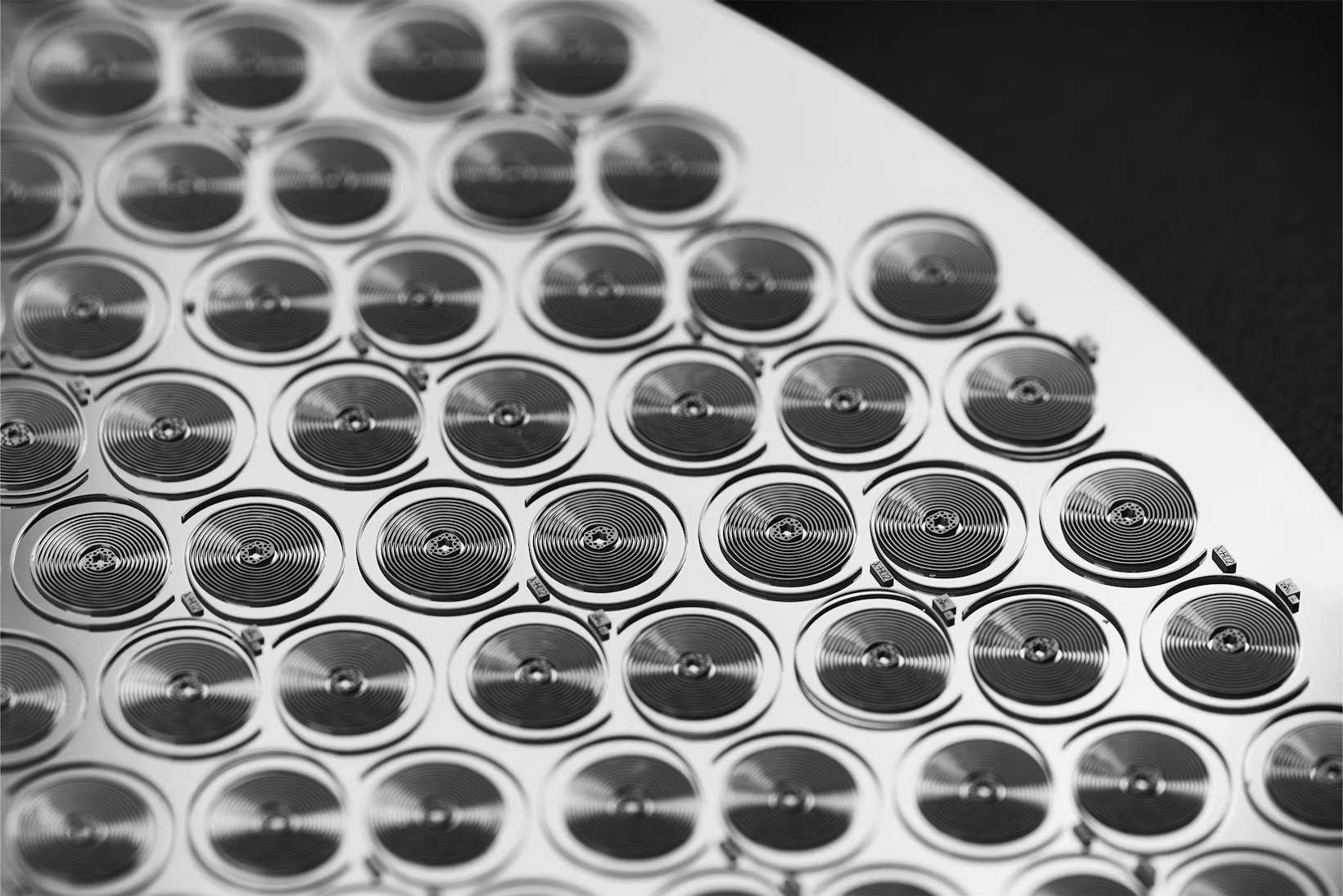After nearly a decade of research and development, TAG Heuer is now capable of serially producing a carbon-composite balance spring that competes against silicon springs.
Balance Springs
A mechanical watch relies on a balance spring (synonym: hairspring), which is analogously referred to as the beating heart of a timepiece. The balance spring controls the rate of oscillation of the balance wheel, and thus the rate of the movement of the hands and the accuracy of the timepiece. Moreover, the technology to create the hair-thin spring, crucial to a mechanical timepiece’s operation, has long been controlled by only a handful of the most powerful watchmaking giants.
Silicon Patent Expiration
The patent for silicon balance springs, developed through a partnership between a consortium led by the Centre Suisse d’Electronique et de Microtechnique (CSEM), a private, non-profit Swiss innovation center, along with Rolex (Syloxi), Patek Philippe (Spiromax), Ulysse Nardin, and the Swatch Group, expired in 2022, making the technology available for wider use in the watchmaking industry.
Balance Spring Investment
The LVMH group-owned watchmaker TAG Heuer has reportedly invested approximately 50 million Swiss Francs in its unique carbon composite balance spring technology. Despite silicon technology being available to companies outside of the original consortium (since 2022), TAG Heuer has chosen to stay on its own development path, which started almost a decade ago, instead of taking the easier route of using the silicon patents that expired three years ago. And the result is a promising new way of producing balance springs.
Carbonspring Construction
The result is the TH‑Carbonspring, a revolutionary new carbon-composite balance spring (oscillator) developed entirely in-house by TAG Heuer’s R&D department (TAG Heuer LAB). The balance spring material is created using chemical vapor deposition (CVD), where hydrocarbon gases decompose at high temperatures (600–850 °C) within a controlled chamber, depositing carbon atoms to form carbon nanofibers.
There a surely similarities between balance spring manufacturing with Nivarox and Silicon materials; however, the exact production process is proprietary and remains a closely guarded company secret. That said, we can speculate that the proprietary carbon composite material is formed into a balance spring via a sophisticated, custom CNC machining process.
Each TH-Carbonspring is paired with a custom aluminum balance wheel featuring gold inserts for temperature compensation, according to TAG Heuer Official Magazine.
Key Advantages
Ultra‑lightweight – offering reduced inertia for improved timekeeping precision.
Amagnetic – completely immune to magnetic interference.
Highly shock‑resistant – better able to withstand physical shocks than traditional materials
Temperature resistant – temperature changes pose no threat to its accuracy.
Final Thoughts
The TH-Carbonspring offers exceptional chronometry, responding with agility and precision to every oscillation. Its lightweight, amagnetic structure shields it from the invisible interference of magnetic fields, while exceptional shock resistance safeguards stability even in the harshest conditions. Temperature fluctuations do not negatively affect timekeeping the way traditional materials do, according to TAG Heuer. Ultimately, the technology improves isochronism (consistent oscillation) and long-term stability (chronometric stability and resilience across challenging conditions). At least initially, due to the significant investment to get to the serial production stage, the cost to produce timepieces with this new technology is presumably higher than with the existing balance spring technology TAG Heuer has used for decades.
At launch, the TH-Carbonspring is being used inside the caliber TH20‑60, which powers the 2025 Monaco Flyback Chronograph (39 mm), with a retail price of approximately $17,900. TAG Heuer also uses TH-Carbonspring technology in caliber TH20‑61, which powers the Carrera Tourbillon Extreme Sport (44 mm), which retails for approximately $42,100. Both models feature a high-tech, lightweight carbon fiber case and are limited to 50 pieces.
Photos by TAG Heuer.





